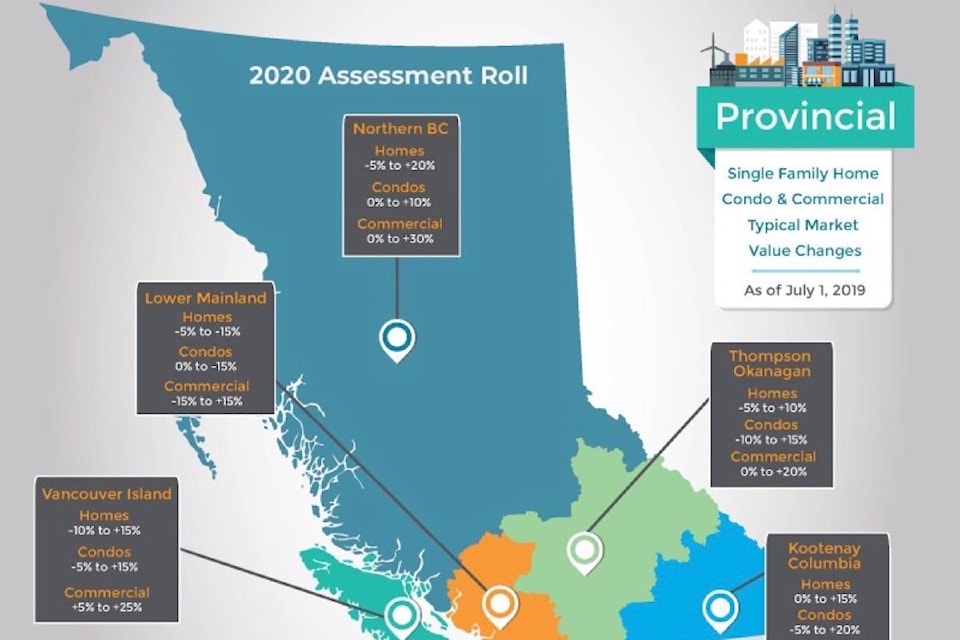The Regional District of Nanaimo saw a 12-per cent decrease in new construction value during the last assessment roll period.
In a presentation at RDN’s January board meeting, Maurice Primeau, a B.C. Assessment Vancouver Island deputy assessor, said the region saw an 11.8-per cent decrease in total change in value not related to market change. Total non-market change was at about $627 million. In addition to new construction, it also includes demolitions, boundary extensions, property class changes, subdivisions and exemption status changes.
For the City of Nanaimo’s 2020 assessment roll, non-market change for residential dropped to $242 million from $363 million, meaning less new construction in Nanaimo, Primeau said, while non-market change for commercial increased to $43 million, as there is “a constant demand for good quality industrial buildings and strong demands on commercial and industrial vacant land sales in 2019.”
The overall non-market change for the City of Nanaimo is $282 million, down from $386 million last year, he said.
RELATED: B.C. Assessment valuations likely won’t lead to big Nanaimo tax hikes
RELATED: What to do if you don’t agree with your property assessment
The District of Lantzville’s overall non-market change was also down from last year, but not by much, according to Primeau.
“Last year’s number was about $27 million,” Primeau told the board. “We’re at $24 million this year. Commercially last year, it was minus $333,000. This year it’s up $1.6 million, so it indicates there’s been a bit of a lift in the commercial market there, in terms of new developments or new businesses opening and overall non-market change last year was $26 million and it’s $25 million this year, so not much of an overall fluctuation, but it was down last year.”
Cassidy, Cedar, Yellow Point and South Wellington (Area A), saw drops in residential, commercial and total non-market change.
“Overall, there’s been minor changes in the non-market change,” Primeau said of Area A. “[Residential] is $37 million this year. It was $38 million last year, so fairly stabilized. [Commercial], $275,000, is down moderately from almost $900,000 the year previous. Non-market change, total classes, $36 million and it’s down from just about $39 million the previous year.”
Gabriola Island and surrounding area (Area B) also saw decreases. Primeau said non-market change for residential is down about $2 million to $18 million, while commercial was down to $555,000 from $225,000 and total non-market change was down $3 million to $17 million.
Primeau said there were some increases for Area C: Extension, East Wellington, Arrowsmith-Benson and Pleasant Valley.
“A good lift in the single family dwellings there … The [residential] is up this year (to about $25 million) from $22 million,” said Primeau. “Non-market change for commercial was flat … For the most part a good lift in the non-market change for Electoral Area C.”
Area E, Nanoose Bay, saw a decrease in non-market change for residential, at about $30 million, a drop of about $10 million this year, Primeau said. Non-market change for commercial was up to $277,000 and total non-market change was at $31 million, down $9 million.
For more information, go to www.bcassessment.ca.
reporter@nanaimobulletin.com
Like us on Facebook and follow us on Twitter
